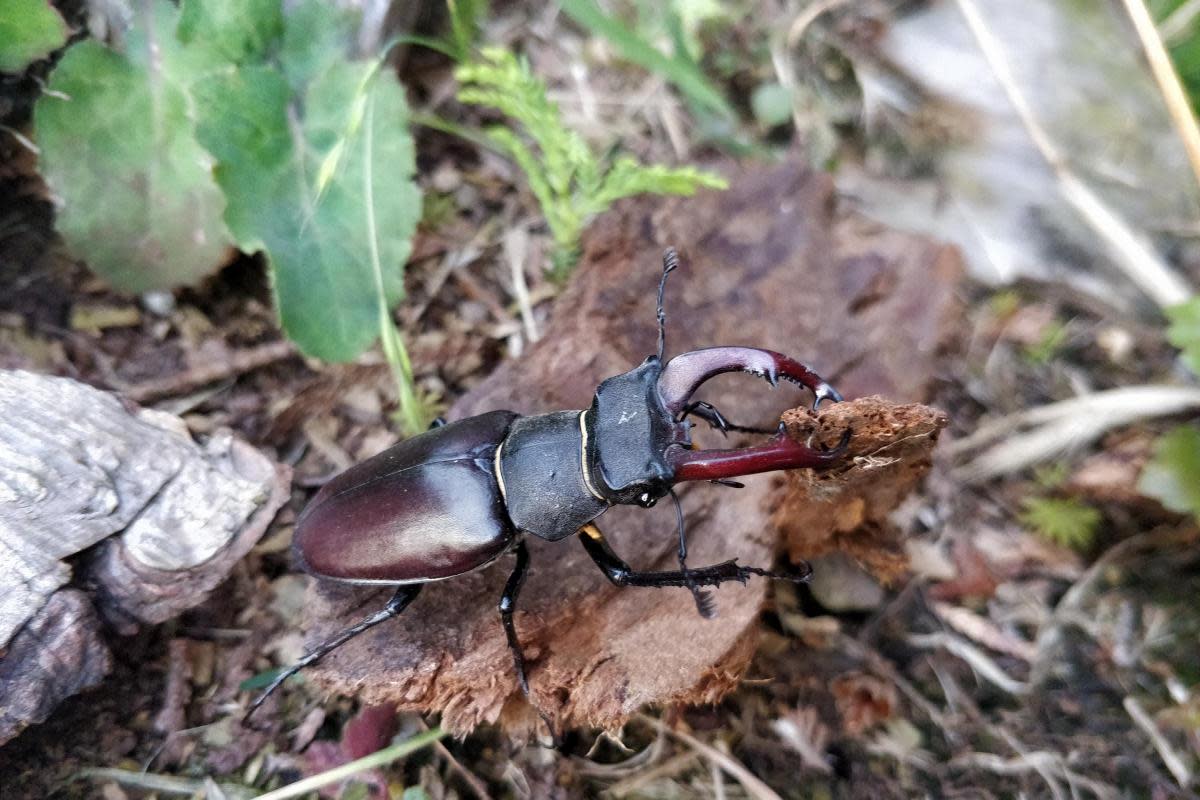'Rare globally threatened' beetle spotted in Worcestershire

A "GLOBALLY threatened" beetle has been spotted in a Worcestershire town.
The "rare" stag beetle was seen in Upton, which has led Worcestershire Wildlife Trust to encourage residents to report any sightings.
These beetles measure 7 to 8cm and derive their name from the males' antler-like jaws, but their jaws are harmless to humans.
Wendy Carter, communications lead for Worcestershire Wildlife Trust, said: “Worcestershire is at the northern edge of their range in the UK, and so far, we’ve only got confirmed records for them living in and around the Upton area.
“Residents here should be really proud to have such amazing and rare insects in their town and surrounding villages. They’re globally threatened and are protected by law in the UK.
“They’re a key species for conservation in Worcestershire, and we’re encouraging anyone who spots a stag beetle to fill out a short form on our website to submit the sighting to the county database."
Stag beetle larvae live in buried dead wood for five to seven years before emerging as adults.
The beetles depend on dead or rotting wood to breed, which is why their numbers have been dropping because we tend to ‘tidy’ gardens and recreational areas.
Depending on the weather, stag beetles emerge from June and have already been spotted this year.
They can often be spotted ‘sunbathing’ on warm pavements and roads, so anyone who spots one should carefully and gently move it to a safe place.
“Forty-one per cent of our insects are at risk of extinction, so as part of the Trust’s Action for Insects campaign, we’re encouraging everyone to give some thought as to what they can do to help boost insect numbers," she added.
“Residents in and around Upton, for example, could create log piles and bury timber into quiet, shady corners of their garden. The best type of wood to bury is from native broadleaved trees – oak or beech, for example – with the bark still attached.
“These piles don’t need to be too high and allowing vegetation to grow over them creates more habitat for more wildlife.”
Anyone who sees a stag beetle should take a photo and report it via the Worcestershire Wildlife Trust website.

 Yahoo News
Yahoo News 
